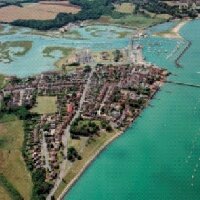Environmental Quality in Spatial Planning


Guidance to help in the preparation of Regional Spatial Strategies and Local Development Frameworks.
This Guidance is supported by a series of supplementary files available via the link in the right hand column. These discuss the key messages and explain the action points in the guidance and/or provide more information that will assist in their delivery.
Purpose of this guidance
This guidance is produced by the Countryside Agency, English Heritage, English Nature and the Environment Agency (the agencies) to help planning authorities and regional planning bodies in preparing plans and strategies under the new planning system. It will also be used by the agencies’ own staff. It is intended to supplement guidance issued by the Office of the Deputy Prime Minister (see Supplementary File 1).
We are not seeking to impose any new requirements on planning authorities, rather to set out our views as to how planning authorities might achieve high standards of environmental quality in spatial planning. Planning authorities should therefore apply this guidance in the light of the scope of the particular plans and strategies they are preparing and the sustainability appraisal they will be undertaking.
The agencies’ approach to the new planning system
The Planning and Compulsory Purchase Act 2004 introduces fundamental changes to the planning system. We support the changes, especially the greater emphasis on sustainable development, spatial planning, community involvement and quality outcomes, and are committed to helping their delivery. The new system and the ODPM guidance provide a major opportunity for us to help deliver the policies and proposals that will shape new development and steer change, in England, in the future.
Some of our ideas are at the cutting edge of planning policy and practice. They are intended to be inspirational and aspirational, and as such will need developing and testing in practice. The guidance sets out examples of good practice that are drawn from plans prepared under the old planning system but could easily be adapted to fit the new system. Good practice is evolving and we will be pleased to hear from any plan-making bodies that are pursuing initiatives to develop good practice under the new planning system.
Supplementary File 1 gives more information about the background to the guidance.
The agencies envisage a plan making system that is:
- properly resourced
- evidence based
- genuinely visionary
- realistically ambitious
- more inclusive
- better connected
- fully integrated
- objectives-led
- spatially variable
- clearly prioritised
- firm but flexible
- rigorously tested
- well delivered
- adequately monitored
- regularly reviewed
so that development:
- is more sustainable; both in built form and location;
- respects the ability of the environment to accommodate change (including climate change);
- avoids damage to and increases or enhances the environmental resource;
- reduces risks to, and potentially arising from, the environment;
- respects local distinctiveness and sense of place and is of high design quality, so that it is valued by communities; and
- reflects local needs and provides local benefits.
To view this document please click on the pdf icon in the right-hand column.
What's New?
-
The National Heritage List for England is now live on the English Heritage website.
-
Welcome to the HER21 page. This page offers access to the full suite of HER21 project reports.
